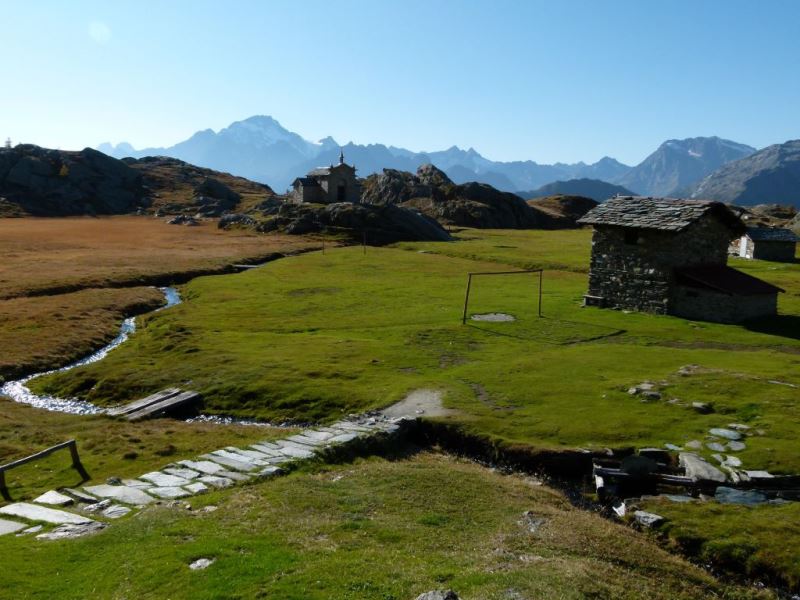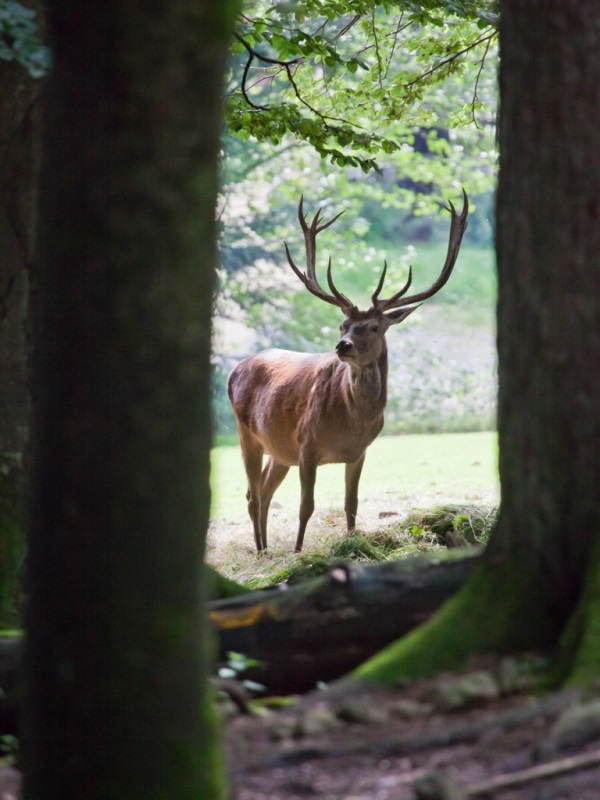 Prabello Alp
Prabello Alp
The band of conifer woods often opens up to wide meadows created by man over the centuries for their cattle.
They appear to be natural meadows in the landscape, although they often differ in the types of flora they contain.
The most common plant in this band at this height in areas subjected even in the past to overgrazing, is mainly Nardus, dominated by Nardus stricta (Mat-grass), whereas the meadows on the steep, southerly, exposed slopes have
Festuca scabriculmis (Hack).
Where man has not intervened to clear the woods, the conifers slope down towards natural meadows through a band of contorted shrubs (green alders, rhododendrons, juniper).
At over 2,400 m a.s.l. there is a prevalence of alpine sedges, such as Carex curvula, found at the Campagneda Pass and at Bocchetta delle Forbici, and Festuca Halleri growing on the southfacing slopes.
 A handsome example of an adult stag.
A handsome example of an adult stag.
The Common frog and the Alpine newt are two typical amphibians found at this height.
Both need stagnant water for reproduction, which used to be common in the drinking wells for the cattle and which have become very rare nowadays.
Unlike the newt, the frog spends the rest of the year in the meadows and often becomes prey to the two species of vipers present in the Valmalenco: the European viper and the common adder or asp.
The numerous birds include those found in the low shrubs, such as the dunnock, the lesser whitethroat and the garden warbler. Others, however, live in open areas, such as the pipit, the wheatear and the black redstart.
The slopes with rocky outcrops are home to the last quails, once very numerous and now increasingly rarer.
In autumn, you can see rutting stags in the meadows scattered through the woods, whereas the chamois usually remain at higher altitudes.
The meadows are also the hunting grounds for the golden eagle, which prefers to hunt the marmot, both of which have increased in numbers in recent years.